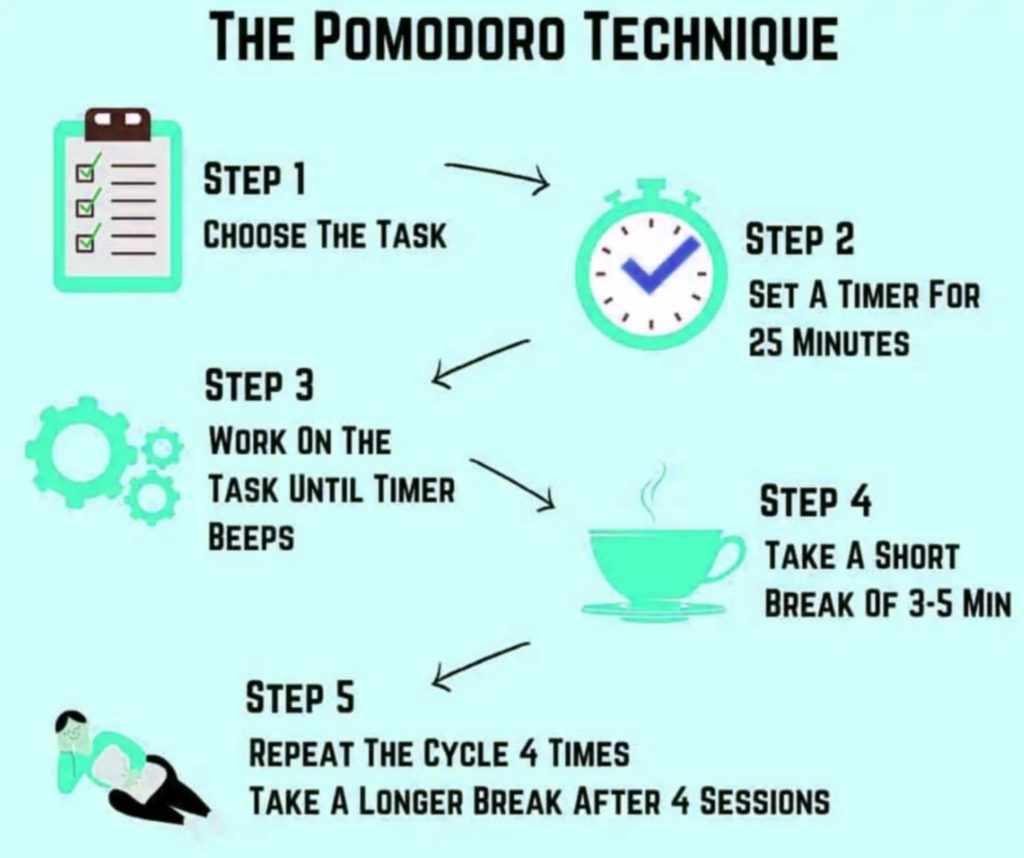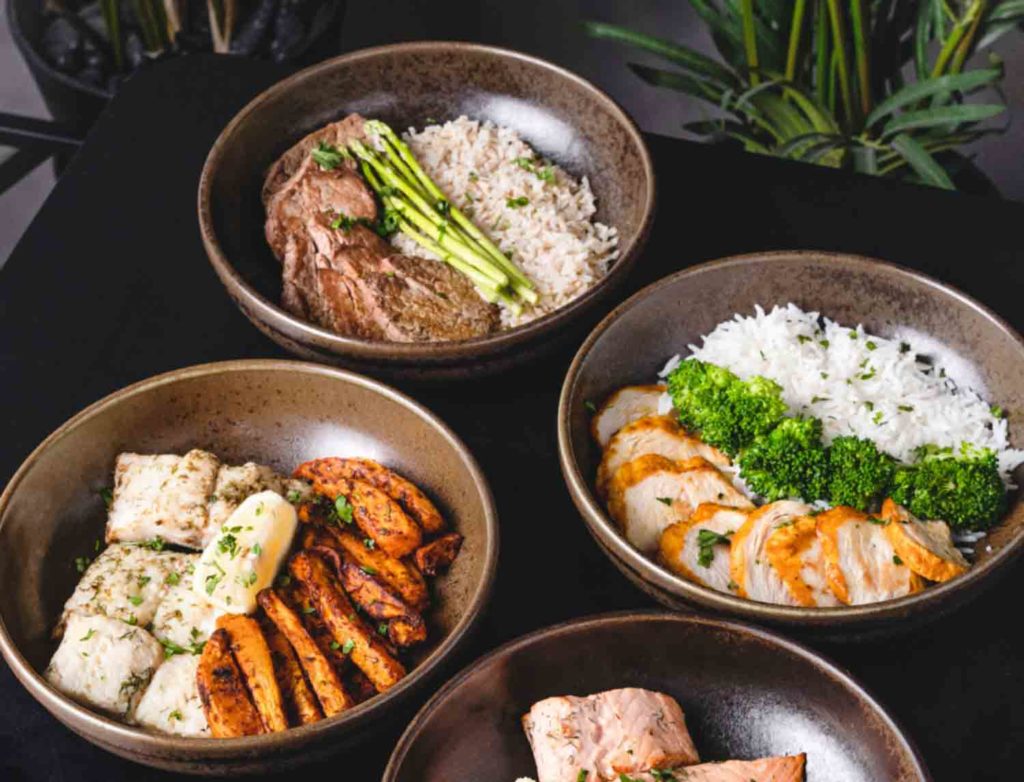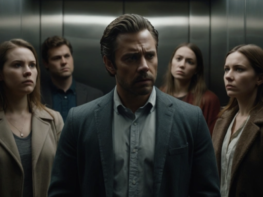Introduction:
As spiritual & life experience deepens, we're often faced with a reshuffling of both life priorities and values.
From undergoing rapid psycho-spiritual growth, this was the case for me.
I was fulfilled spiritually but other areas of my life had become foggy.
Namely:
What are my highest life priorities/goals
and
What do I value most in life?
Without knowing these answers with diamond-like clarity, I wasn't show up for myself, my loved ones and my broader community and actualizing my potential.
To solve this, I designed the ultimate 2-day reflective retreat.
And in this post I'll be taking you though that exact process.
In Part 1, we'll look at everything that goes into preparing your very own retreat - from nutrition to designing an agenda.
In Part 2, we'll look at an intersection of both Western/Eastern practices for staying hyper-focused and grounded in a fulfillment mindset rather than an egoistic one.
In part 3, we'll wrap up with post retreat advice to help you stay integral to your commitments.
Toward the end, I'll even share my values and goals that I clarified through this process.
But first -
Warning:
This post is a long one, and I care about your time.
Read it if:
- You feel a sense of uncertainty toward what you value and where you're going that spirituality alone isn't satisfying.
- You recognize the relative need for life direction.
- You know that endless pursuits for materialism and status won't fulfill you at the deepest level.
- You want a templated system that has worked for me to cultivate immense life clarity.
- You're simply curious about what a reflective retreat might look like and if it may benefit you.
Table of Contents:
0.0: Why Go On A Reflective Retreat?
PART 1: Retreat Preparations
1.1: Make a Grand Gesture
1.2: Nutrition Considerations
1.3: Supplements
1.4: Restrictions/Rules
1.5: Designing Your Reflective Retreat Agenda
1.6: Resources
PART 2: The Retreat
2.1: Designing The Optimal Battle Station
2.2: Supplementary Practices
2.3: Staying Focused
PART 3: Beyond The Retreat
3.1: Post Retreat Practices
3.2: When Should You Do This Process Again?
3.3: Staying Meta.
If you want this in a shortened video format to get the gist of this process, I already made a 2-part series that documents just that.
You can watch the videos below for inspiration/entertainment.
But otherwise, if any of the aforementioned reasons speaks to you, read on.
Why go on a reflective retreat?
Do I have to state the obvious?
We're completely overstimulated, over-scheduled, and overwhelmed.
Media, Kids, Jobs, Study..
So much noise of the world is clouding our capacity to think clearly.
The good thing is - if you're reading this blog - you likely already recognize this.
But did you know that actually makes you an outlier?
Most don't even realize the magnitude of noise present in their lives.
As a result, most will never take the time for a deep plunge inward to investigate what they value or where they're going.
That's tragic.
As Prof. Jordan B Peterson says: When we know who we are and where we're going we cultivate positive emotion.
And if the Abhidhamma forthrightly states that 'Mind is the forerunner of all things', we need to take this seriously.
When we get seriously clear on our lives, we not only show up for ourselves.
We show up for out loved ones AND broader community.
Here's the good news.
We actually don't need to spend that much time reflecting on our life.
That is, if we go about it skillfully and with ruthless intent.
If we imagine drawing a bow (the reflective retreat) that shoots an arrow (our life direction) across an enormous, lengthy trajectory - we only need to overcome enough friction in a short period of time (drawing the bow) for massive results.
We then release a soaring arrow that penetrates the world with its diamond like clarity for months to come.
After all, this whole process will usually only take 48 hours!
32 of these hours will be wake time, and half of which we will probably actually be utilizing actively toward this process.
And if the average human life in the U.S is 460,192 hours (accounting for sleep) according to the CDC, basic math entails we're literally spending 0.006% of our lifetime invested into this endeavor.
And that's assuming we use EVERY single hour of our retreat time reflecting ardently.
We get one chance at life (that could end at ANY moment), and so many of us drift aimlessly and allow life to guide us at will.
So to make a microscopic time investment like this is a pretty damn important endeavor, right?
Well, it certainly seems like it to me.
As it does to our friend Blaise Pascal, who famously said:
All of humanity's problems stem from man's inability to sit quietly in a room alone
So without further adieu, let's look at how we might organize an endeavor like this.
Part 1: Retreat Preparations.

1.1 Make a Grand Gesture.
Why not just do this whole process in the comfort of your own home?
Well, you could - but I would advise against this.
In the book Deep Work, author Cal Newport describes how author J.K Rowling booked herself into a high rise apartment akin to the stories she wrote about in her world-famous Harry Potter series.
Why?
To escape the noise of the world and immerse her deeply in the Harry Potter universe.

High castle peaks and magnificent furnishings buttressed her against the onslaught of ruthless distractions.
Her children, fame, and the general hustle and bustle were no longer able to divert her attention from her objective.
Write a damn good book.
But more perhaps more importantly, the fantasy-like environment she was in subconsciously infused into her writing for greater creative outputs.
The furniture and architecture reminded her of the very universe she wrote about.
And all of this conjoined to enable Rowling to bring an excellent book to fruition.
Not only that, but with shocking ease.
When we make 'grand gestures' as Cal Newport describes them, we subconsciously solidify the fact that we're serious about an endeavor.
There is a lot more friction toward giving into distractions like YouTube, Facebook and god forbid - Tiktok - when we have firmly planted the flag with a financial & mental commitment to a process.
In my case, I chose to book in at a Buddhist monastery for 2 days at a cost of $160 AUD.
A small price to pay with a massive return on investment.
The money investment held me more accountable to follow through, and I was also in a place that aligned with my values of non-materialism and fulfillment.
When choosing your location - If you're really frugal - you might even consider simply going to a library for an entire day.
But given this is future we're organizing here, I would highly recommend making a grand gesture with a financial tie to make this whole process REAL for you.
Keep this in mind, however.
The important thing is to change up your environment from what you're used to.
Avoid doing this within the confines of your office or room where you usually do work.
But at the end of the day, it's entirely up to you.
Oh, and if at any point you're faced with the belief that 'I won't have time for this'
Make time for this.
Again, this is only 0.006% of your life at most.
Book the retreat 1 month in advance, schedule leave from work and let life organize itself around it.
Trust me, life has a way of organizing itself once you truly commit to something.
1.2: Nutrition Considerations.
Nutrition is the literal fuel of your body.
Overlook it at your own detriment.
For this endeavor, do yourself a favour and pack healthy meals.
In my paradigm with an extensive health and fitness background is the following:
Meals that are low carbohydrate based with a high protein & fat content are optimal for staying cognitively alert.
This means picking foods like fish, eggs, avocado, nuts and vegetables as opposed to rice, potato, noodles, pastas, processed foods and sweets.
A bucket-load of carbohydrate rich food is a one way ticket to dullness.
Ever had a food coma and tried to do something productive?
Yeah.
Not ideal.
Don't waste your precious retreat time in a state of dullness from over-eating.
I might remind you here that this is our life course we're designing here.
If we're drawing an arrow with our bow for the future of our lives, any unnecessary defect to our bow that could be avoided with a small amount of extra effort seems to me to be worthwhile.
For these reasons, I meal prep almost all of my meals.
Meal prepping also has the added benefit of having us not needing to worry about cooking and using up precious retreat hours washing dishes.
Simply pop it in the microwave or on the stove to reheat and you're done.
For inspiration - I ate the following on both days of my recent retreat.
BREAKFAST: Mediterranean Chickpeas and Quinoa (without the sauce)
LUNCH: Easy Coconut Fish Meal Prep (substitute rice with cauliflower rice)
DINNER: 3x Eggs, High Protein/low carb and fat Yogurt, Mixed Berries and a Banana.
SNACKS: 85% Dark Chocolate, Nuts.
1.3: Supplements
Along with nutrition, you may choose to invest into some supplements to optimize the retreat further.
Supplements that boost mood and performance throughout this experience have the potential to have a huge return on investment.
Coffee, for example, is an excellent supplement for its mood and concentration boosting effects.
Mushroom extracts also boast similar effects.
Even teas are a great!
Given we're only on retreat for 48 hours, why not make the most of it by augmenting your experience with supplements?
On my retreat, I only utilized coffee.
Supplement ideas:
- Coffee
- Tea
- Mushroom extracts
- Herbal compounds
- L-tyrosine
- Iron
- Omega-3s
1.4: Restrictions/Rules
On 10-day Vipassana Meditation retreats, attendees are not allowed to talk, read, write or take intoxicants.
As a matter of fact, these are only a few of the many restrictions imposed.
Why do they use these?
To ensure students remain single-pointedly focused on the retreat agenda.
Namely, serious insight-based meditation practice.
In the same way, setting restrictions will be a game changer for your return on investment.
Your mind won't be darting off subconsciously spending 30% of its cognitive capacity reflecting on a social media post that triggered you just 30 minutes earlier.
It only takes one brief distraction to throw us off significantly from deep, focused work.
Here are some distraction elimination restriction examples:
- No internet access
- No social media
- No phone/tablet usage
- No video games
- Not utilizing certain applications on your laptop
- Only read relevant resources to meet your retreat agenda.
It's important to be honest with yourself here - what is likely to distract you?
Identify it, and eliminate it.
It's important to note that some restrictions we may set aren't purely to strip us of distraction.
Some are for optimal mental function.
For example, stopping work at 7pm ensures we have ample time to wind down for a revitalizing sleep.
Here are some optimal functioning restriction examples:
- Stop work at 7pm
- Lights out at 8pm
- Limit each work session to 1.5 hours before taking a break.
- Only 1x coffee per day
- Drink at least 2L of water per day.
What will help you remain in an optimal state of mind?
Identify that, and nourish it.
Set restrictions.
Your future will be influenced greatly by it.
1.5: Designing Your Reflective Retreat Agenda
Now it's time for some fun.
It's time to design what exactly you'll be focusing on during your time on retreat.
a powerful question to for this ask is:
What are the area(s) of my life, when examined closely, will move my life forward the most?
That might be a reshuffling of how you're using of your time toward career vs family time and a strategy of how you'll transition into that.
Or to develop financial growth plan for the next 5 years with actionable steps.
Or how you're going to strategically go about improving your mental health.
Whatever!
This is your retreat.
As already alluded to, I knew that I wanted to focus on setting four one-year fulfilling goals and getting clear on my values.
This is simply because when it comes to getting clarity and life direction, these areas of self actualization are equivalent to the heart and brain.
Most other things are only peripheral.
However, we're all in different seasons of life with our own challenges and values.
So, brainstorm what you could benefit from investigating and then make a decision on what it is you'll focus on.
1.6: Resources
Having identified what you'll be reflecting on in your retreat, it's now time to consider what resources you will be utilizing to meet your objective.
Ideally, you want to pick resources that have stood the tests of time.
This could be books, YouTube video recordings or old Tony Robbins audio tapes you picked up 15 years ago.
We don't have to reinvent the wheel.
Many people have created systems and guides for these sorts of processes that have scientifically backed frameworks for us to follow along with.
In my case, I knew that Tony Robbins's Awaken the Giant Within had everything I'd need to fulfill my objective.
More specifically, Chapter 12 and 15 for goal and value setting clarification.
But if Anthoy Robbins doesn't appeal to you, you might consider utilizing Professor Jordan B. Peterson's Self Authoring Suite.
The suite (that costs a small fee) offers a comprehensive life reflection system that I have utilized multiple times in the past for goal setting and reconciliation of my past.
I highly recommend it.
Maybe for you it's a marriage counseling book if you're restructuring your intimacy/work priorities.
Or maybe it's a financial awareness book you can work through such as Your Money or Your Life.
Either way, pick relevant, timeless resources that will serve as a guide/compass in your reflective process.
Again, there's no need to reinvent the wheel.
PART 2. The Retreat

Now that we've prepared for our retreat, it's time to discuss strategies to stay on task and get some SERIOUS work done.
2.1: Designing the Optimal Battle station.
If you're a chef, you'd be familiar with the term 'mise en place'
Translation: Everything in its place.
Chefs go an extra mile to ensure that their workstations are clean, tidy and organized.
This ensures maximum productivity and safety for diners at the restaurant.
Translation: When you design a productive workspace, your friends, family and yourself will benefit from your increased outputs.
How might we do this?
Well, preparing healthy snacks and drinks are a great way to start.
Organize them on your desk in an accessible, orderly way as to inhibit the need to continuously keep getting up and sacrificing valuable time and breaking your state of flow (which we'll talk about more later).
But you might also consider setting up your station next to a window with natural light gently landing on you.
Or placing your favourite desk plant pot within your workspace.
Or ensuring you chair is comfortable and the desk isn't raised too high.
There are many things we can do, but anything to enhance our mood, eliminate distraction and keep us comfortable may very well provide you with a surprisingly augmented experience.
2.2: Supplementary practices
Have you ever tried to make decisions with a mind riddled with anxiety/depression?
It's possible, but our judgement is clouded toward selfishness, insecurity and inaction.
Enter supplementary practices.
Supplementary practices are another way to significantly enhance our outputs and direct our mind to wholesome intentions.
Think of them as the mood-enhancing strategies we'll be using to ensure we're in an idealized mind state of happiness and well being to undergo effective reflection.
They work like this:
When we skillfully use our attention, we alter our brain chemistry.
Rather than having our system swimming in cortisol (stress hormone), our goal with these practices is to infuse the body with oxytocin and serotonin (feel-good hormones).
No matter how enlightened we may be, these neurotransmitters have an astonishing impact on thought-stream that should NOT be overlooked.
Now, there are many ways to cultivate oxytocin and serotonin.
I can only speak from experience and tell you what has worked for me - but I recommend the following:
1: Self Compassion
It's difficult to describe the powerful effects of self compassion practice.
Making meditation a priority for me has always been a no brainer.
My regular daily meditation practice is already 2 hours, so I usually work to carve out ~2x the amount of time practicing on reflective retreat processes.
So in this case, 4 hours.
When meditating, I use a blend between Tonglen, Shamatha, Metta and Visualization to cultivate pleasant states of mind and limit self limiting belief from imposition onto my reflective experience.
There's no hard and fast rules, but I allow my intuition to guide me toward which practice would be most effective in the moment.
If you have minimal meditative experience, I'd highly recommend Sharon Salzberg's Metta Meditation.
Here is an excellent free Metta Meditation series on YouTube.
For more advanced practitioners, you'll usually know what will work best for you.
However, I will still point you in the direction of some resources that may be more specific to this process that I have found to be useful.
Alan Wallace has an unbelievably powerful free retreat resources accessible on Youtube that will skillfully guide one into a state of Shamatha with ease.
I've utilized his free retreat 'The way of Shamatha' as a powerful resource for my well being.
I also adore Michael W Taft's free guided meditations on YouTube.
Here's some I refer back to for Shamatha, Tonglen and Metta regularly.
A side-note: Michael also incorporates Insight based practice into his meditations, which is extremely powerful for holding a Meta perspective when goal/value setting as to not get tied into egoistic propensities.
As far as self compassion goes, the sky is really the limit.
If you can get into Jhana, go for it!
If visualizing your pets does it for you, do that!
Our goal is simply to alter our brain chemistry toward more favorable biochemistry of Serotonin/oxytocin as to augment our retreat experience outputs.
2: Exercise
Our minds and bodies are tightly interwoven.
If we neglect the bodies need for movement, our mind suffers.
As a result, our retreat may be impacted negatively.
For this reason, another useful asset is to ensure you make time for exercise during various times throughout the day.
Whether that means going out for a 30 minute walk, doing yoga or an intensive David Goggins workout - anything is good.
Although - you probably don't want to go overboard as to deplete the body of its energy supply.
As Goldilocks would say - not to hot, not too cold, but jussssst right.
2.3: Staying Focused:
This may very well be the most important section of this entire post.
After all, while we can sink many hours into work, how many are actually productive?
I'm talking about getting in a flow state.
Where you feel so engaged with the task at hand that any subject-object complex merges into one unified experience.
Thus, resulting in insane outputs.
Here, I'll look at two methods to get into flow and enhance your outputs dramatically.
The second method I'll mention is implementable immediately.
The first may take a bit more reading and practice, but is absolutely worth investing time into reading up on.
Look into them with more depth at your own discretion.
Technique 1: Deep Work
First, I'm a massive condoner of Deep Work and always try to use these principles whenever I can.
The term was originally dubbed by Professor Cal. Newport and published in his book Deep Work, Rules for Focused Success in a Distracted World.
Since its publication, the strategies for focus have developed somewhat of a cult following.
This blog post does the topic justice in a curated format that will take far less time to consume than the book itself.
But incase you're short on time and already overwhelmed by the length of this post, I also made a video that incorporates some of the principles of Deep Work that will be more than sufficient for application to your own retreat.
You can watch it here.
I highly recommend investing time into the principles of Deep Work to make your retreat one to remember.
Technique 2: The Pomodoro Technique
The Pomodoro technique is brilliant by nature of its simplicity.
It goes like this.
Work for 25 minutes, take a 5 minute break.
Rinse. Repeat, for as many rounds as you can handle.

The idea is that our minds accrue cognitive fatigue over time.
When we refresh our minds with a short productive break - exercise, stretching and going outside to get some fresh air - we diminish a significant amount of that cognitive fatigue and can come back to work with fresh eyes.
Breaks should be productively used as to not hook out minds onto a lingering distraction that will then cross-pollinate back into our subsequent session.
It's easy to imagine how jumping on Facebook Messenger and responding to a distraught friend may skew your minds focused trajectory in a negative light.
While doing this, it goes without saying: Eliminate all distractions.
Putting on noise cancelling headphones, turning off our phones and blocking access to websites are some great options here.
This will enable you to access flow.
Utilizing these techniques greatly improve upon your focus and thereby your return on investment.
When applied, you're bound for a prosperous retreat.
Part 3: Beyond the Retreat

Going on retreat alone isn't enough.
Once completed, it's now time to actually do the work you set out for yourself.
If we spend 2 days drawing up a map that we don't actually use, what was the point?
For this section, I'll be focusing primarily on strategies to stay integral to goal and value setting - although, these practices apply to other reflective processes as well.
3.1: Post retreat Practices
Practice 1: Visualization.
Following the practices of Tony Robbins, I've found visualization to be a helpful practice in realigning myself toward goals.
Most of the time after a meditation sitting, I will put 5-10 minutes aside to vividly imagine myself attaining to the goals that I laid out for myself.
Bringing vivid mental images to mind of how it would feel to achieve each respective goal.
Feeling the pleasant sensations and bathing in that like a warm bath.
The idea is to condition into the nervous system that this is something we WILL achieve.
Creating a somatic feedback response of positive emotion when thinking about the goal achievement only helps to being it become a reality.
But possibly more importantly, keeps our reflective process fresh on our minds on a daily basis rather than having it become something we forget about it.
Practice 2: Weekly Piloting
Additionally, utilizing the free Software 'Notion' - I have also built a weekly template to reflect on my progress toward goals for 10-15 minutes every Sunday.
During this time, I will look at each goal and reflect on what went well/what went poorly toward its attainment.
I will also reflect on the actionable steps that I can take toward improving and then work to calendar/schedule in events throughout the week to ensure the goal is met.
Although, you don't need to use Notion.
Any software or process will do.
Old fashioned? Use a notebook.
It's totally up to you.
Consider weekly piloting to keep you on track.
3.2: When should you do this process again?
As we continue to grow both personally and spiritually, there will come a time when we may feel foggy in our direction once more.
When this time comes, it's totally valid to consider another retreat.
However, be wary.
In men's work, there is an archetype called the Magician - the sage.
The shadow of the magician is the Trickster.
The trickster is renowned for analysis paralysis.
Rather than sticking to the grand plan that has been laid out, the Trickster will constantly try to re-assess different angles of approach.
"Hmm, I'm not sure if this really was the right decision"
"Should I do this instead?"
This sort of thinking is valid, but in excess can lead to inaction and therefore stagnation.
We don't do what we set out to do and remain dreamers.
Be wary of this when considering another reflective period.
As a general rule of thumb, 6 months may be a good idea to revitalize our goals.
Anything sooner is entering the territory of analysis paralysis.
3.3: Staying Meta
I've just spent a lot of time talking about mind-constructed realities and projections into the future.
I've also talked about new-age visualization techniques and manifestation.
So perhaps there's a lingering doubt-mass on your mind.
Isn't this all within the realm of thought and self-reification?
Isn't this screaming of dissatisfaction with the present moment?
On one hand, yes.
It does scream of dissatisfaction.
However, as householders - Desire/Craving is very difficult to avoid when we are honest with ourselves.
When we have families and lives to build on the relative level, this is the truth we must face.
We have to chart a course somewhere, or else we remain adrift and foggy within the territory of idealism and inaction. As a result, those around us suffer needlessly from our abstinence of responsibility.
However, on the other hand - we can still hold an enlightened perspective whilst undergoing progression toward goal (or whatever we got clear on) achievement.
What we have in any given moment is our attention.
When directed skillfully, we can still frequent ponder the ultimate truths of reality.
We can, for example, realize that we are already whole and complete right here and now while still having goals set in motion.
We can realize that any goal is simply a thought - and what's behind that thought is our true nature.
The timeless, boundless, still, empty void of experience.
Stillness that is always accessible.
MY GOALS AND VALUES:
For those curious, following these principles and applying the frameworks outlined in Tony Robbin's Awaken the Giant Within, I established my values and 4 1-year goals.
My Highest Values.
- Happiness/Love (Self Love, Spirituality, WL Balance)
- Truth (Awakening, Not Lying, Equanimity, Openness, Objectivity)
- Health/Vibrancy (Exercise, Nutrition, Sleep)
- Integrity (Sticking to Values, being prompt)
- Courage (Action Bias, Pushing through fear)
- Growth (Marketing, Seeking Mentorship, Reading, Intimacy)
- Impact/Contribution (High Value based outputs)
- Success/Drive (Focus, Discipline, Vision)
- Creativity (Content Creation, Branding)
- Wisdom
- Security
- Independence
My Goals
- Overcome self limiting beliefs/pervading negative emotional sates that hold me back by committing relentlessly to self love/somatic practices as primary modalities whilst still making room for insight practice.
- To be a highly sought after professional content marketer whom works remotely producing content for mental health brands around optimizing for happiness (Mental health, spirituality, psychology, self actualization/improvement).
- Produce high quality and consistent video/blog content that speaks to and serves those seeking freedom from suffering/happiness. Reach an audience 10,000 subscribers and an email subscriber list of 500 who receive this value by the end of 2022.
- Move into a contemporary, minimalist apartment with beautiful natural lighting, modern appeal and a killer office: Kitted with recording gear, lighting, sound proofing ect with multiple screens to reduce as much friction as possible in content production.
CONCLUSION
Picture a world where everyone took time for themselves to get CLEAR.
Where people knew their goals, values and life direction rooted in empowerment and making the world a better place.
A world where everyone utilized self loving practices that extinguish ego and inclined the mind toward happiness and fulfillment at the deepest level.
What a world that would be.
Do yourself a favour.
Partake in this movement toward a better future.
Make time for yourself and chart a meaningful life like you MATTER.
Because - speaking frankly, you do.
Metta,
Sam.








